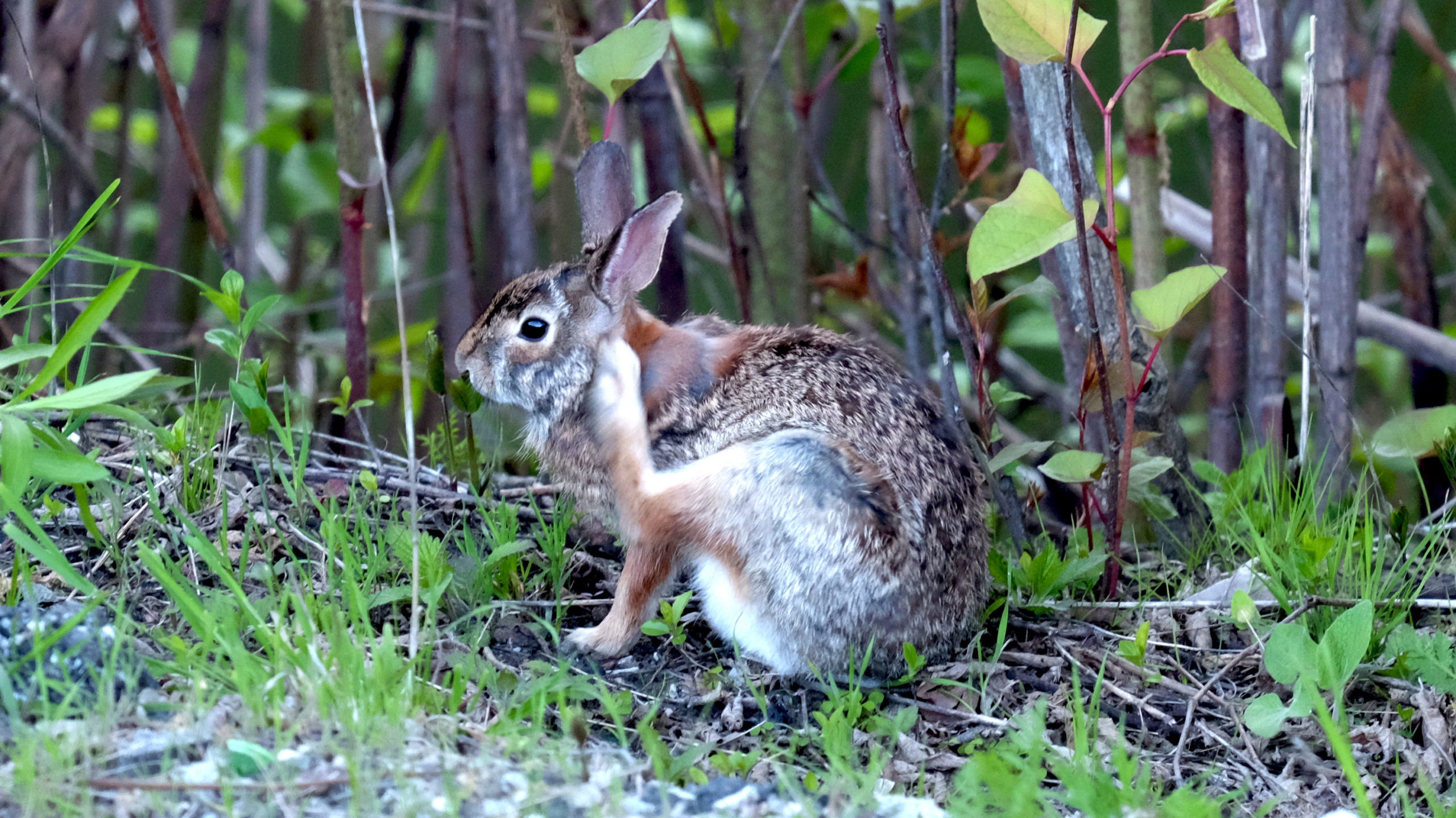Why are some fences a problem?
Fences create barriers for certain wildlife as they move around to find food and shelter. Animals and insects can become trapped, injured or even killed by fences. Instead, we have a responsibility to increase connectivity between natural areas – this is critical to the well being of urban wildlife.
Which fences are a problem?
Fences that
- Make it difficult for animals to jump over or crawl under
- Could hurt animals due to loose or broken wires
- Are difficult for running animals or birds to see
- Create a complete barrier or have wires spaced too closely together
Assess your fences
Ask yourself:
- Does your property need a fence at all? Open space with no fencing is the best situation for wildlife.
- If you do need a fence, what is its purpose? Fences are a good idea when deer are so abundant that they eat most native plants, preventing them from surviving and killing young trees. The fences need to be at 6-8 feet tall to keep deer out until the trees are mature enough. Google this topic for more information.
- Depending on its purpose, could you use a fence alternative?
Use a fence alternative whenever possible
Hedgerows: closely spaced line of shrubs or trees that mark a boundary and provide privacy while still allowing animals to pass through easily. Hedgerows of native trees or shrubs also provide food and shelter to wildlife.
How to build your hedgerow
Recommended species
Consider using several different native shrub or tree species so that your hedgerow benefits a variety of wildlife. Choose native species that are best suited to the growing conditions of your property. Native species that make a good hedgerow include:
- Red osier dogwood
- Wild raspberry
- Willow
- Hazel
- Choke cherry
- Serviceberry
- Wild rose
- Hawthorn
How to space your hedgerow
- Spacing depends on the species of shrub or tree you use because some are larger than others. Ideally, your hedgerow will create a solid wall of growth.
- Consider a density that will account for some trees or shrubs to die without creating a huge gap in the hedgerow.
- As a general guideline, plant hedgerow species at intervals of about 1 metre. “For a quicker growing, denser hedgerow, plant shrubs in two rows 20–30 centimetres apart, using three shrubs per metre.”1
- According to the the City of Toronto Fence Bylaw, a hedgerow cannot be within 2.4 metres of a driveway. This is so that the view of the road remains unobstructed.
Connect your hedgerow with neighbours
Connecting hedgerows between neighbouring properties connects habitat for wildlife. Consider speaking with your neighbours about removing fences and instead planting hedgerows between your properties.
For more information, including growing conditions for specific trees and shrubs, learn how to create a hedgerow for wildlife.
Boundary Posts: Another fence alternative to use boundary posts, which will simply demarcate your property while allowing wildlife to move freely.

Make sure existing fences are wildlife friendly
If hedgerows or barrier posts won’t work for your property, and you need a fence, ensure it is wildlife friendly. Wildlife-friendly fences allow wildlife to either jump over or crawl under easily without injury, while increasing connectivity between natural areas. If you have an existing fence, you can make it more wildlife friendly:
- Keep wires tight
- Remove loose or broken wires
- Reduce the number of wires to 3 or 4
- Replace barbed wire with smooth wire, particularly for the top and bottom wires
- Cut and smooth down pointed spikes or add a bar across the top of pointed spikes
- Adjust the height of the top and bottom beams or wires to allow wildlife to jump over or crawl under more easily
- Add a flag or marker to make the fence more visible
- Create an opening in your fence to allow animals to pass through


Make sure new fences are wildlife friendly
If you need to put up a new fence, make sure it has these wildlife friendly features:
- Smooth wires with no sharp material (e.g., pointed spikes), loose, or broken wires
- Wide spacing between beams or wires
- A maximum of 105 cm high
- A minimum of 46 cm of clearance between the ground and the lowest beam or wire
- Posts that are 5 metres apart
- Fence flags or markers that make the fence highly visible for wildlife
Example of a wildlife friendly fence:

Footnotes
Information in this section adapted from:
Hanrahan, C. (2018). Creating a hedgerow for wildlife. Ottawa Field-Naturalists’ Club. https://ofnc.ca/programs/fletcher-wildlife-garden/make-your-own-wildlife-garden/creating-a-hedgerow-for-wildlife
LeSher, A., Rosenbloom, J. & Duerksen, C. (n.d.). Wildlife-Friendly Fencing Standards. Sustainable Development Code. https://sustainablecitycode.org/brief/adopt-wildlife-friendly-fencing-standards/#_edn6
Paige, C. (2012). A Landowner’s Guide to Wildlife Friendly Fences: How to Build Fence with Wildlife in Mind. https://www.landcan.org/pdfs/Landowners-Guide-WildlifeFriendly-Fences-Montana.pdf
1 – Quoted from https://ofnc.ca/programs/fletcher-wildlife-garden/make-your-own-wildlife-garden/creating-a-hedgerow-for-wildlife

